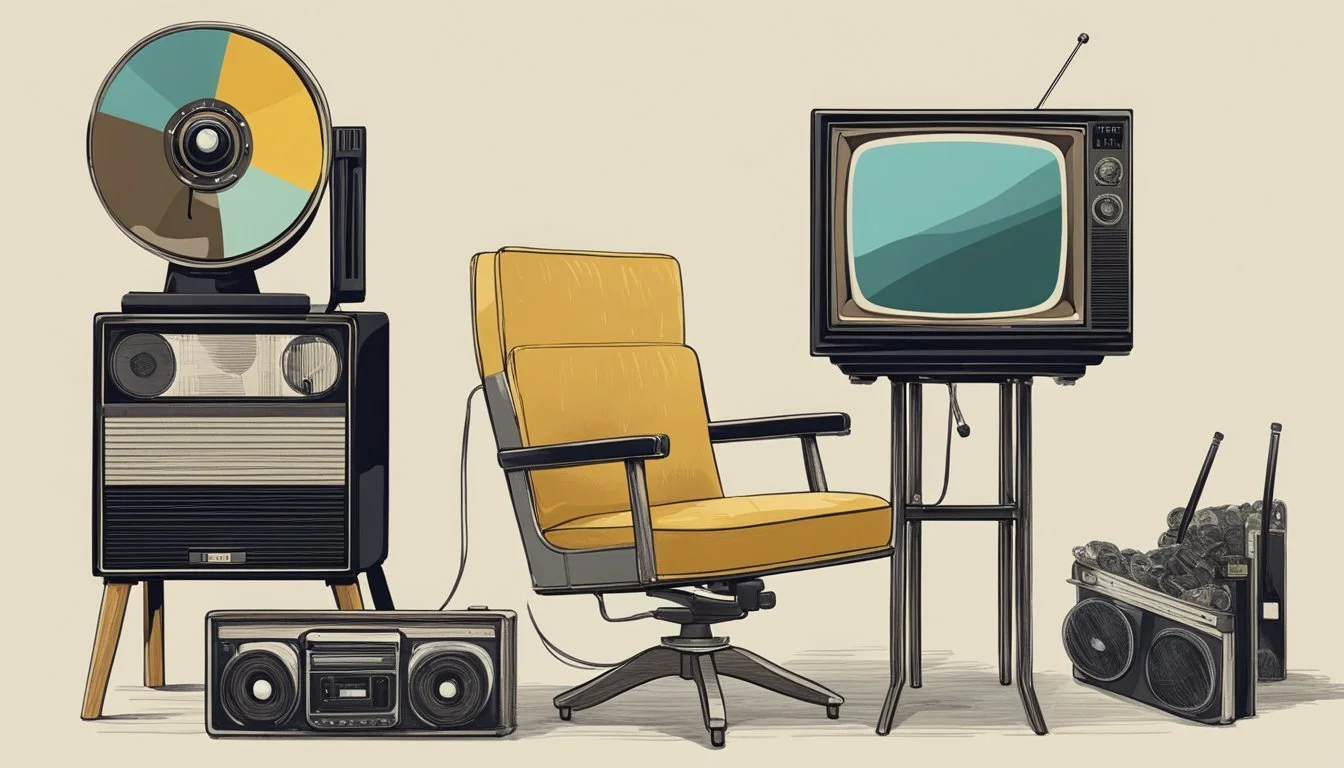Top Documentaries of 1991
Essential Viewing for Film Enthusiasts
The year 1991 was a remarkable time for documentary filmmaking, producing several influential and critically acclaimed works. Documentaries from this period covered a wide range of subjects, from behind-the-scenes looks at legendary films to explorations of social and political issues. These non-fiction films captured real-life stories and events, providing audiences with unique insights into various aspects of the world.
Some of the top documentaries from 1991 continue to be regarded as classics in the genre today. These films not only entertained viewers but also educated and inspired them, often shedding light on lesser-known topics or offering new perspectives on familiar subjects. The documentaries of 1991 exemplify the power of non-fiction storytelling and its ability to engage audiences with compelling real-world narratives.
1) Hearts of Darkness: A Filmmaker's Apocalypse (1991)
Hearts of Darkness: A Filmmaker's Apocalypse offers a gripping behind-the-scenes look at the making of Francis Ford Coppola's epic war film Apocalypse Now. Directed by Fax Bahr, George Hickenlooper, and Eleanor Coppola, this documentary provides an unflinching portrayal of the challenges faced during production.
The film combines footage shot by Eleanor Coppola during the filming of Apocalypse Now with later interviews of cast and crew members. It reveals the numerous obstacles encountered, including script issues, budget problems, and casting difficulties.
Hearts of Darkness showcases the toll the production took on Francis Ford Coppola, nearly destroying his career and personal life. The documentary highlights the director's struggles and determination to complete his ambitious project despite overwhelming odds.
The film offers valuable insights into the filmmaking process and the creative vision behind Apocalypse Now. It stands as a testament to the challenges of bringing a complex artistic vision to life on screen.
Hearts of Darkness: A Filmmaker's Apocalypse received critical acclaim for its candid portrayal of the filmmaking process and its exploration of artistic ambition.
2) Paris Is Burning (1990)
Paris Is Burning offers a captivating glimpse into New York City's drag ball culture of the 1980s. Directed by Jennie Livingston, this documentary sheds light on the African-American, Latino, gay, and transgender communities involved in this vibrant subculture.
The film explores the elaborate competitions where participants "walk" in various categories, showcasing their fashion, dance moves, and ability to "pass" as different genders or social classes. It introduces viewers to iconic figures like Willi Ninja, known for his exceptional voguing skills.
Paris Is Burning delves into themes of identity, chosen family, and the pursuit of fame and acceptance. The documentary highlights the "houses" that form the backbone of ball culture, providing support and mentorship to their members.
The film gained critical acclaim for its honest portrayal of a marginalized community. It captures both the joy and struggles of its subjects, offering insight into their dreams, hardships, and resilience.
Paris Is Burning remains a significant work in LGBTQ+ cinema, preserving a crucial moment in queer history and influencing popular culture long after its release.
More information on Paris Is Burning
3) The Thin Blue Line (1988)
Errol Morris directed "The Thin Blue Line," a documentary that revolutionized the genre. The film investigates the 1976 murder of Dallas police officer Robert W. Wood and the subsequent conviction of Randall Dale Adams.
Morris employs innovative storytelling techniques, including dramatic reenactments and a Philip Glass score. These elements create a compelling narrative that questions the justice system's reliability.
The documentary presents interviews with key figures involved in the case. It meticulously examines evidence and witness testimonies, revealing inconsistencies in the prosecution's arguments.
"The Thin Blue Line" had a significant real-world impact. Its findings led to a re-examination of Adams' case, ultimately resulting in his release from prison in 1989.
The film's influence extends beyond its subject matter. It challenged traditional documentary conventions and paved the way for future true crime investigations in media.
More information on The Thin Blue Line
4) Tongues Untied
Tongues Untied (1989) is a groundbreaking documentary by filmmaker Marlon Riggs that explores the experiences of Black gay men in America. The film blends various styles, including poetry, personal testimony, and performance art.
Riggs uses his own story as a framework to examine issues of racism, homophobia, and identity. The documentary features powerful spoken word pieces by poets like Essex Hemphill and Brian Freeman.
Tongues Untied gained attention for its frank discussions of sexuality and its critique of both mainstream society and the Black community. The film's innovative approach challenged traditional documentary formats.
Despite controversy surrounding its content, Tongues Untied received critical acclaim for its artistic merit and cultural significance. It remains an important work in LGBTQ+ cinema and African American film.
More information on Tongues Untied
5) Madonna: Truth or Dare (1991)
Madonna: Truth or Dare offers an intimate look at the pop icon's Blond Ambition World Tour. Directed by Alek Keshishian, the documentary captures Madonna both on and off stage during her groundbreaking 1990 tour.
The film alternates between black-and-white backstage footage and color concert performances. It showcases Madonna's provocative stage presence and her interactions with dancers, crew members, and family.
Truth or Dare became a commercial success and critical talking point upon its release. The documentary's candid portrayal of Madonna's life and personality sparked discussions about celebrity culture and the boundaries of public and private life.
The film's frank depiction of sexuality and Madonna's unapologetic attitude pushed boundaries for documentaries of its time. It provides insight into the singer's creative process and the hard work behind her elaborate stage shows.
Madonna: Truth or Dare remains a significant entry in the music documentary genre. It influenced future behind-the-scenes films and helped solidify Madonna's status as a cultural icon.
More information on Madonna: Truth or Dare
6) American Dream
"American Dream" (1990) is a powerful documentary directed by Barbara Kopple. It chronicles the 1985-1986 strike at the Hormel Foods plant in Austin, Minnesota.
The film provides an intimate look at the workers' struggle against wage cuts and deteriorating working conditions. Kopple's cinéma vérité style captures the raw emotions and personal stories of those involved.
"American Dream" won the Academy Award for Best Documentary Feature in 1991. It also received the Grand Jury Prize for Best Documentary at the Sundance Film Festival.
The documentary explores themes of labor rights, corporate power, and economic change in America's heartland. It shows the complex dynamics between union members, company leadership, and the local community.
Kopple's unflinching portrayal of the strike's impact on families and the town itself adds depth to the narrative. The film stands as a compelling record of a pivotal moment in American labor history.
More information on American Dream
7) A Brief History of Time (1991)
A Brief History of Time is a documentary film directed by Errol Morris. It explores the life and work of renowned physicist Stephen Hawking.
The film is based on Hawking's bestselling book of the same name. It combines explanations of complex cosmological concepts with biographical elements.
Interviews with Hawking's family members and colleagues provide insight into his personal life and scientific achievements. The documentary showcases Hawking's brilliance despite his physical limitations from motor neuron disease.
Philip Glass composed the original music for the film. His score complements the scientific and biographical narratives.
A Brief History of Time received critical acclaim upon release. It appeared on several "top ten" lists for 1992, including those of Time and The Los Angeles Times.
The documentary offers a unique glimpse into the mind of one of the 20th century's most influential scientists. It presents complex ideas about the universe in an accessible manner for general audiences.
8) The Civil War by Ken Burns
Ken Burns' documentary series "The Civil War" first aired in 1990, not 1991. This groundbreaking nine-episode series chronicled the American Civil War in unprecedented detail.
Burns and his team spent five years researching and creating the documentary. They sifted through thousands of photographs, letters, and firsthand accounts to bring the conflict to life.
The series covered the war's causes, major battles, and lasting effects on American society. It featured expert commentary, dramatic readings of historical documents, and period music.
"The Civil War" was a massive success when it aired on PBS. Over 39 million viewers watched at least one episode, with an average of 14 million viewers per night.
The documentary's innovative storytelling techniques and comprehensive approach to history set a new standard for educational programming. It remains highly regarded for its thorough and engaging presentation of this pivotal period in American history.
More information on "The Civil War" documentary series
9) The Restless Conscience: Resistance to Hitler (1992)
"The Restless Conscience: Resistance to Hitler Within Germany 1933-1945" is a compelling documentary directed by Hava Kohav Beller. The film sheds light on the often-overlooked internal opposition to Adolf Hitler's regime within Germany itself.
This documentary explores the motivations and actions of German citizens who resisted Nazi rule from 1933 to 1945. It focuses on individuals whose moral convictions led them to oppose Hitler's government, despite great personal risk.
The film highlights various resistance efforts, including the infamous July 20, 1944 plot to assassinate Hitler. It reveals that this was not an isolated incident, but part of a larger pattern of opposition within Germany.
"The Restless Conscience" received critical acclaim and was nominated for an Academy Award for Best Documentary Feature. Its powerful portrayal of conscience and moral courage in the face of tyranny resonated with audiences and critics alike.
Through interviews and historical footage, the documentary provides a nuanced view of resistance in Nazi Germany. It challenges the notion that all Germans were complicit in Hitler's regime, showcasing those who fought against it from within.
10) 35 Up (1991)
35 Up continues Michael Apted's groundbreaking documentary series following the lives of 14 British individuals. This installment catches up with the subjects at age 35, exploring their personal and professional developments since the previous film.
The documentary provides a fascinating glimpse into how people's lives evolve over time. It touches on themes of career progression, relationships, and changing perspectives as the participants enter their mid-30s.
Apted's interviewing style allows for candid and often revealing conversations with the subjects. The film offers insights into British society and class structures through the diverse experiences of its participants.
35 Up maintains the series' unique approach of revisiting the same individuals every seven years. This longitudinal study format allows viewers to witness the gradual changes in people's lives and attitudes over an extended period.
The documentary received critical acclaim for its honest portrayal of ordinary lives and its exploration of universal human experiences. It continues to be regarded as a significant work in the field of documentary filmmaking.
Historical Context of 1991
1991 marked a pivotal year in global affairs, technological progress, and cultural shifts. Significant geopolitical changes reshaped international relations, while advancements in computing and telecommunications set the stage for the digital revolution.
Global Political Climate
The collapse of the Soviet Union dominated world events in 1991. On December 26, the USSR officially dissolved, ending the Cold War era. This event led to the emergence of 15 independent republics and a dramatic shift in global power dynamics.
The Gulf War concluded in February, with U.S.-led coalition forces liberating Kuwait from Iraqi occupation. This conflict showcased new military technologies and strategies.
In South Africa, the government repealed apartheid laws, paving the way for democratic elections. Nelson Mandela, released from prison the previous year, became president of the African National Congress.
Technological Advancements
The World Wide Web became publicly available in August 1991, marking the birth of the modern internet. Tim Berners-Lee introduced the first web browser and web server, revolutionizing information sharing.
Personal computing made significant strides. Microsoft released MS-DOS 5.0 and Visual Basic, enhancing software development capabilities. Apple introduced System 7, a major update to its Macintosh operating system.
Mobile phone technology advanced with the launch of 2G cellular networks in Finland. This digital cellular technology improved call quality and enabled text messaging.
CD-ROM drives became increasingly common in personal computers, allowing for larger software applications and multimedia experiences.
Influential Filmmakers of the Era
The early 1990s saw a surge of innovative documentary filmmakers who pushed the boundaries of the genre. These directors introduced new techniques and perspectives that would shape documentary filmmaking for years to come.
Breakthrough Directors
Ken Burns emerged as a prominent figure with his distinctive style of historical documentaries. His 1990 series "The Civil War" captivated audiences with its use of archival photographs and expert interviews. Errol Morris continued to make waves with "A Brief History of Time" (1991), exploring the life and theories of Stephen Hawking.
Barbara Kopple solidified her reputation with "American Dream" (1990), which won an Academy Award for Best Documentary Feature. The film provided an intimate look at a workers' strike against a meatpacking plant in Minnesota.
Michael Moore gained attention with "Roger & Me" (1989), setting the stage for his influential work in the 1990s. His confrontational style and personal involvement in his documentaries became a hallmark of the era.
Innovative Cinematic Techniques
Directors in the early 1990s experimented with new filming and editing techniques to enhance storytelling. The use of reenactments became more sophisticated, blurring the line between fact and dramatization.
Filmmakers began incorporating more personal narratives and reflexive elements, acknowledging the presence of the camera and the filmmaker's role in shaping the story. This approach added layers of complexity to documentaries.
Advanced camera technology allowed for more dynamic and intimate footage. Lightweight cameras enabled directors to capture spontaneous moments and follow subjects more closely, creating a sense of immediacy.
Editing techniques evolved, with faster cuts and more stylized transitions becoming common. These methods helped maintain viewer engagement and conveyed information more efficiently.






